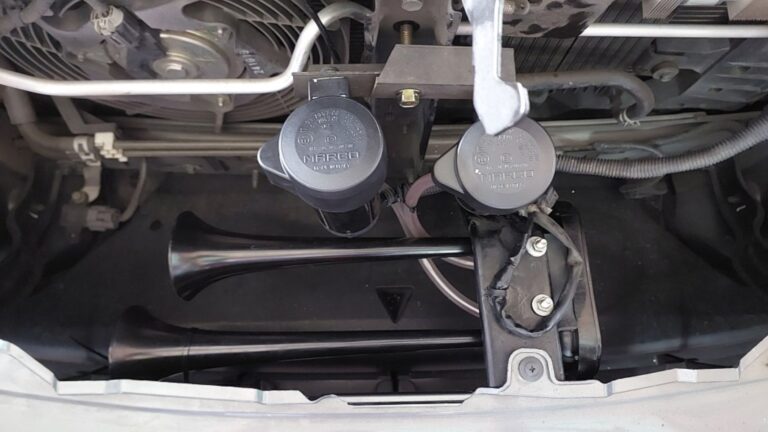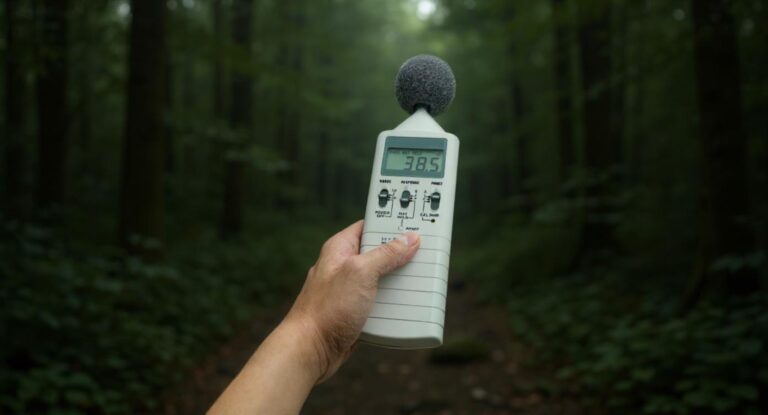What Type of Compressor Works Best With Loud Devices?
Ever tried listening to your favorite music or podcast, only to get blasted by sudden spikes in volume? Loud devices—think guitars, drum kits, microphones, or even industrial tools—can be unpredictable in their sound levels. That’s where compressors step in. Compressors help control these dynamic ranges, making loud sounds softer and soft sounds louder, so your ears aren’t constantly on a rollercoaster ride.
Understanding Compression Basics
Before diving into compressor types, it’s important to get a clear idea of what a compressor actually does. At its core, compression is an audio processing tool designed to control the dynamic range of a sound signal. The dynamic range is simply the difference between the quietest and loudest parts of an audio signal. Without compression, some sounds might be so loud they’re uncomfortable or cause distortion, while others might be too soft to hear clearly. A compressor smooths out these extremes, making the overall sound more balanced and pleasant to the ear.
Compression works by reducing the volume of louder sounds and, in some cases, raising the level of quieter sounds. This helps keep the audio within a certain range so nothing jumps out unexpectedly or gets lost in the mix. Think of it like a volume controller that automatically adjusts itself — it tightens up the sound, so it feels more consistent and polished. This is especially useful in live performances, recordings, and broadcasting, where unpredictable volume changes can be distracting or damaging to equipment.
Four key controls define how a compressor shapes the sound: threshold, ratio, attack, and release. The threshold is the point at which the compressor starts working — any sound above this level gets compressed. The ratio determines how much compression is applied once the sound crosses the threshold. For example, a 4:1 ratio means that for every 4 decibels the input exceeds the threshold, only 1 decibel actually comes out, effectively squashing the loud parts. Attack and release control how fast the compressor responds. Attack is how quickly the compressor kicks in once the signal exceeds the threshold, and release is how fast it stops compressing once the signal falls back below that point.
Together, these controls allow sound engineers to sculpt audio in very precise ways. By adjusting these settings, you can make a drum hit sound punchier, a vocal more even, or a guitar more controlled. Understanding these basic concepts is essential before exploring the different types of compressors available, as each type interacts with these controls differently, producing unique sonic results.
Different Types of Compressors Explained
| Compressor Type | How It Works | Sound Character | Typical Use Cases | Pros & Cons |
| VCA (Voltage Controlled Amplifier) | Uses an electronic amplifier controlled by voltage to reduce gain | Clean, precise, transparent | Drums, guitars, mix bus, broadcast | Pros: Tight control, fast attack/release; Cons: Can sound clinical or harsh if overused |
| FET (Field Effect Transistor) | Uses a transistor circuit to emulate tube-like compression | Punchy, aggressive, warm | Snare drums, vocals, electric guitar | Pros: Very fast response, adds character; Cons: Can distort if pushed too hard |
| Optical Compressor | Uses a light sensor and an optical cell to control compression | Smooth, natural, warm | Vocals, bass, brass | Pros: Musical and gentle compression; Cons: Slower attack/release, less precise control |
| Variable-Mu (Tube) Compressor | Uses variable-mu tubes to alter gain dynamically | Warm, thick, vintage | Overheads, vocals, mastering | Pros: Adds harmonic richness, smooth compression; Cons: Bulky, slower response |
VCA Compressors — The Workhorse
VCA compressors are often called the Swiss army knives of compression because of their versatility and reliability. They excel in managing loud devices thanks to several key features that make them stand out in both studio and live settings. Here’s a detailed look at why VCA compressors are so effective for loud sound sources:
- VCA compressors deliver exceptionally clean and transparent compression, meaning they reduce volume without adding unwanted color or distortion to the sound.
- Their precise gain control allows engineers to tighten the dynamic range smoothly, preserving the natural character of the audio.
- They feature extremely fast attack times, which means they respond quickly to sudden loud peaks, preventing harsh transient spikes from overwhelming the mix.
- Fast release times in VCA compressors help maintain the energy and natural flow of the sound, especially important for rhythmic instruments like drums.
- These compressors can handle significant amounts of gain reduction without the signal becoming muddy or distorted, making them ideal for controlling very dynamic or loud instruments.
- The technology behind VCA compression uses voltage-controlled amplifiers that enable very consistent and reliable compression behavior, even under heavy use.
- Because of their clean and accurate nature, VCA compressors are preferred for instruments where clarity and definition are critical, such as electric guitars and drum kits.
- They work well on mix buses to “glue” tracks together, ensuring all elements sit cohesively in the final sound without obvious compression artifacts.
- VCA compressors are highly versatile, suitable for many genres and styles, making them a staple in professional audio setups.
- They provide tight control over dynamics, which helps to enhance punch and presence without sacrificing the original tone of the instrument or voice.
- Due to their quick response and clean sound, they are especially favored for loud and percussive devices that require precise transient shaping.
Example VCA Compressor Models
When it comes to VCA compressors, a few models have earned legendary status due to their reliability, sound quality, and versatility. These compressors have shaped countless recordings and live performances by delivering tight control and punchy dynamics that are essential for loud devices. Two of the most iconic examples are the dbx 160 and the SSL G-Series Bus Compressor. Both represent different strengths within the VCA category and demonstrate why this type of compressor is favored in professional audio environments.
The dbx 160 is known for its fast attack and punchy sound, making it a favorite choice for drums and other percussive sources. Its ability to catch transient peaks with precision allows it to add power and clarity without muddling the original tone. This compressor’s straightforward design makes it easy to dial in aggressive compression that shapes the attack and sustain of drum hits perfectly. Many engineers rely on the dbx 160 to bring energy and presence to kick drums and snares, controlling their dynamics without sacrificing impact.
On the other hand, the SSL G-Series Bus Compressor is celebrated for its “glue” effect, which means it tightens and binds multiple tracks together on a mix bus. Its precise control over gain reduction helps smooth out the dynamics of loud instruments, making the overall mix feel cohesive and polished. Unlike the punchy, aggressive character of the dbx 160, the SSL compressor offers a more subtle, musical compression that enhances the overall balance and feel of a recording. This makes it ideal not only for mix buses but also for compressing loud instruments that need controlled but natural-sounding dynamics.
Both the dbx 160 and SSL G-Series demonstrate the flexibility of VCA compressors. Whether you need sharp transient control on drums or smooth dynamic glue on a full mix, these compressors deliver clean, reliable results. Their speed, precision, and transparency have earned them a permanent place in the toolkit of audio professionals working with loud sources across a wide range of genres and applications. Understanding these models helps clarify why VCA compressors remain the workhorses of dynamic control in both studio and live sound contexts.
FET Compressors — The Aggressive Performer
| Compressor Model | Key Feature | Sound Character | Best Use Case | Pros & Cons |
| Universal Audio 1176 | Ultra-fast attack and release | Punchy, warm, slightly gritty | Snare drums, vocals, guitars | Pros: Fast response, adds character; Cons: Can distort if pushed too hard |
| Empirical Labs Distressor (FET mode) | Versatile with multiple modes | Aggressive, fat, warm | Drums, guitars, vocals | Pros: Highly flexible, creative compression; Cons: May require careful tuning |
Famous FET Compressors
FET compressors have earned a legendary status in the world of audio processing, thanks to their unique combination of fast response, punchy character, and musical coloration. Several models stand out as iconic tools, widely used in studios and live sound setups around the globe. These compressors are celebrated for their ability to handle loud, dynamic sources with both precision and personality. Here’s a detailed look at some of the most famous FET compressors and what makes them special:
- The Universal Audio 1176 is arguably the most well-known FET compressor, revered for its incredibly fast attack and release times that can catch the sharpest transients in an instant. Its signature aggressive yet warm tone has made it a staple on vocals, snare drums, and electric guitars. The 1176’s distinctive “all-buttons-in” mode pushes the unit into a highly compressed, distorted sound that producers love for adding character and edge to tracks.
- The Empirical Labs Distressor is a versatile compressor that can operate in multiple modes, including an FET emulation mode, making it one of the most flexible dynamic processors on the market. It can mimic the aggressive punch of a classic FET compressor while offering additional creative controls for shaping sound. The Distressor is prized for its ability to fatten up drums and guitars and add warmth to vocals, often used to inject life and energy into mixes.
- Both compressors are renowned for their musical distortion and harmonic enhancement, which gives recordings a sense of excitement and presence that’s hard to achieve with other compressor types. This characteristic saturation is subtle enough to enhance without overwhelming the original signal, making them perfect for loud, performance-driven audio.
- These compressors excel in live and studio environments where control over dynamic peaks is critical but where preserving the natural vibe and emotional impact of the performance is just as important. Their fast reaction times ensure that even the most explosive sound sources stay in check, providing engineers with the confidence to push levels without fear of distortion or clipping.
- Over decades, the Universal Audio 1176 and Empirical Labs Distressor have become reference points for FET compression, often used as benchmarks when designing new compressors or digital emulations. Their enduring popularity speaks to their effectiveness and the unique sonic signature they bring to loud devices and aggressive audio sources.
- These famous FET compressors also offer intuitive controls and rugged build quality, making them favorites among engineers who want a reliable, hands-on tool that delivers consistent, high-quality compression. The tactile experience of dialing in compression on these units often inspires creative decisions that shape the final sound.
- Many producers and mixing engineers swear by the 1176 and Distressor for their ability to inject excitement, warmth, and clarity, especially on percussive and vocal tracks. Their tonal qualities help recordings cut through dense mixes, adding definition and presence without sacrificing musicality.
- The success of these compressors has also inspired a broad range of clones, plugins, and hybrid units, but the originals still hold a special place due to their unique circuitry and analog charm. The legacy of the Universal Audio 1176 and Empirical Labs Distressor continues to influence audio compression techniques and preferences across genres.
Optical Compressors — The Smooth Operator
Optical compressors stand apart from other compressor types by using a unique method to control gain reduction: a light sensor paired with an optical cell. When the input signal gets louder, it causes a change in the light intensity inside the unit, which in turn adjusts the amount of compression applied. This approach results in a smooth, natural response that gently tames the dynamics rather than aggressively attacking them. The way optical compressors work makes them especially suited for applications where musicality and subtlety are key.
One of the biggest reasons to consider optical compressors for loud devices is their smooth and musical compression curve. Unlike some compressors that respond instantly and with hard edges, optical compressors compress the audio gradually and transparently. This creates a pleasing effect that retains the natural dynamics of the performance while still controlling peaks effectively. For instruments or vocals that demand a gentle touch, optical compressors provide that balance, smoothing out harsh volume changes without making the sound feel squashed or lifeless.
Optical compressors typically have slower attack and release times compared to other types. While this might not be ideal for fast transient control in percussion, it is perfect for sources that benefit from a more natural, flowing compression style. The slower response lets the initial transients pass through before the compressor engages, preserving the punch and clarity of the original sound. Meanwhile, the release timing is carefully tuned to avoid pumping or unnatural volume shifts, keeping the audio feeling organic and warm.
Because of these qualities, optical compressors are often the go-to choice for loud vocals, brass instruments, and other sources where you want to maintain a natural vibe without harshness or distortion. They add a gentle warmth and roundness to the tone, enhancing the richness of the sound while subtly controlling dynamics. This makes optical compressors invaluable tools in both studio recordings and live sound situations where preserving the emotional nuance and expressiveness of the performance is essential.







